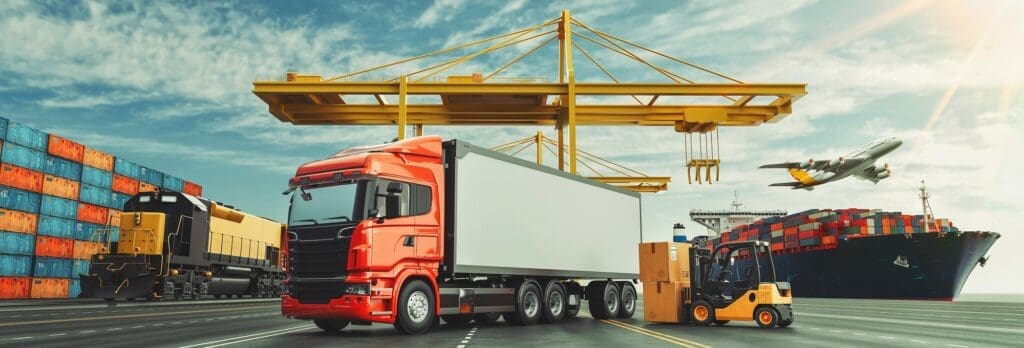Commercial trucks move 70% of all freight transported annually in the U.S. — $671 billion worth of goods. Trucks transport vital goods like disaster relief supplies and military vehicles. They literally keep “keep America moving.” They’re clearly valuable tools with long-reaching effects.
They’re also expensive. Various sources list new Class 8 cabs as costing between $110,000 and $195,000, and new trailers between $30,000 and $80,000 — and the reports didn’t take specialized vehicles into account (like ones used for heavy equipment transport). Trucks are also costly to maintain: A 2016 study by MacKay and Company found that the average truck requires an average of $20,600 parts and services costs per year.
It seems obvious that truck and fleet owners should want to carefully maintain such expensive tools with regular preventative maintenance (PM). What may not be as obvious is that PM can save “an estimated 12-18% cost savings over reactive maintenance programs,” according to the Office of Energy Efficiency and Renewable Energy.
Also not so obvious are the specific preventative maintenance tasks that need to be performed. In last week’s post, we offered PM tips for tires, lubrication, and starting and charging systems. In this article, we’d like to give you tips for maintaining brakes, suspension, coolant systems, and exhaust after-treatment systems, plus a short list of PM tasks that should be performed by drivers on an ongoing basis.
Preventative Maintenance Tips (Pt. 2)
Brakes
During the Commercial Vehicle Safety Alliance’s unannounced Brake Safety Day this past April, 1595 vehicles were removed from service with brake violations. Of course, regular inspections of both brakes and brake strokes should be performed pre-trip, but Keith McComsey of Bendix Spicer Foundation Brake suggests that the key to keeping on top of brake maintenance is to check brakes whenever the vehicle is in for service and while it’s on the road. Some tasks can even be performed without removing the wheel, like these ones recommended by Bendix:
- Inspect air disc brake rotors for cracks, and check tappet boots and guide pin boots for cracks or tears.
- Check drum brakes without dust shields for cracks and lining wear.
- Watch for signs of dragging brakes or overheating linings on drums and rotors, and for uneven friction wear on drum brakes.
- If your vehicle has collision mitigation technology, make sure the forward-facing radar sensor is clear of obstructions and properly aligned.
- Make sure you can identify your truck’s blinking light fault codes, and know how to address any issues IDed by your vehicles warning system.
When the truck is in for service, look beyond the obvious hose and air leak issues. McComsey advises that owner-operators who are new to modern heavy-duty air disc systems pay special attention to calipers, guide pins, and brake pad wear. And, he stresses, vehicles built to the federal reduced stopping distance (RSD) standard must have RSD-rated replacement materials. Low-quality replacement parts may not always make the grade.
Suspension
- Check for signs of uneven wear.
- Ascertain that nothing is interfering or coming into contact with the suspension.
- Make sure that the pressure of air springs is equal on both sides.
Coolant Systems
“About 50% of major engine failures are due to poor coolant system maintenance,” said Homer Hogg of Travel Centers America in a trucking.com article. “At one time, the trucking industry was mostly concerned about the freeze point of the antifreeze and the metals protection provided by the additives. Those concerns are still relevant, but antifreeze has become much more complex.” Hogg advises that drivers and maintenance people:
- Regularly check the condition of coolant.
- Make sure they know exactly what type of coolant is required. The lighter metals (like aluminum) in newer engines sometimes don’t react well with chemicals in traditional coolants.
Darry Stuart of DWS Fleet Management agrees that more emphasis needs to be put on coolant maintenance, especially:
- Checking the EGR cooler at the first sign of a coolant leak.
- Pressure testing the coolant system. “The majority of fleets I visit don’t ever do this,” Stuart says. “Yes, you may cause the system to fail, but you want it to fail in the shop, not on the road…part of the pressure test is to check the cap because caps fail, and most people don’t realize how important caps are to the integrity of the cooling system. Pressure raises the boiling point of the coolant.”
Exhaust Aftertreatment Systems
Coolant systems are connected to aftertreatment systems. Any unexplained loss of coolant could mean that it’s shuttling through the exhaust system to the aftertreatment system, where it can cause major damage to diesel particulate filters (DPF). And replacing those filters can be costly: up to several thousand dollars per filter. To avoid this potential issue, Hogg suggests:
- Regularly cleaning DPF filters.
- Finding the underlying cause of coolant loss. Don’t dismiss a loss just because there’s no obvious external leak.
A Checklist for Drivers
Drivers know their trucks better than anyone, and can spot potential problems earlier, too. In order to stave off most problems (and save the most money), they should regularly:
- Perform the on-the-road brake inspection mentioned above.
- Check tires.
- Monitor wear on windshield wipers.
- Note any damage to the truck body, especially mirrors.
- Report any driving issues, like screeching brakes or rough idling, as well as any uneven wear or other issues noted during on-the-road inspections.
- Make sure the truck is cleaned every six weeks, so that any potential problems aren’t disguised by dirt.
The Value of Preventative Maintenance
(And the Value of Using Next Exit For Your Heavy Equipment Transport)
It’s important to fix issues before they occur, and preventative maintenance can do that. “Experience tells me that over 90% of all trucks receiving a PM will be found with defects that will need to be repaired or corrected,” says Hogg. Preventative maintenance will save you money: in replacement parts, in emergency maintenance service requests, and in the lost time that accompanies any breakdown.
And regular PM may save you more than money: The Federal Motor Carrier Safety Administration lists “vehicles systems failure” as a major contributor to accidents, and advises paying special attention to tires and brakes.
Next Exit Logistics can save you more than money, too. We save you time and hassle, and give you the peace of mind that comes from working with experts. At Next Exit Logistics, we earn the trust of our clients with efficiency, transparency, and security. In addition, we understand how to handle freight services for unusual, oversize, or overweight shipments and are certified to arrange the shipment of hazardous materials. To learn more about our services, call Next Exit Logistics at 866-624-2661 or contact us via email.




